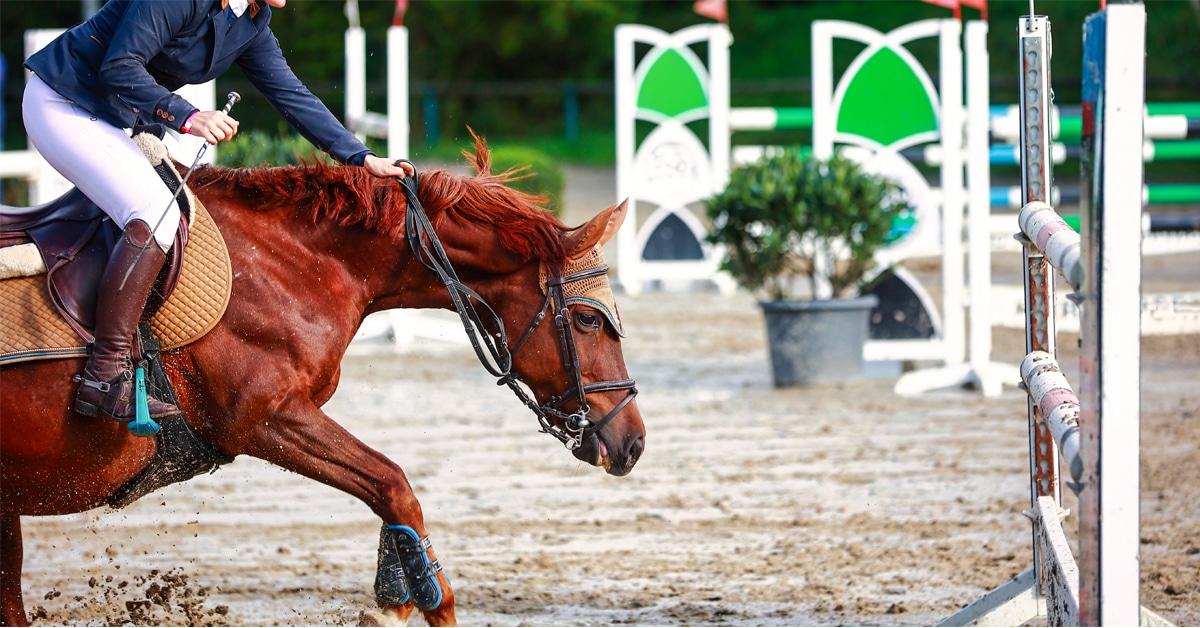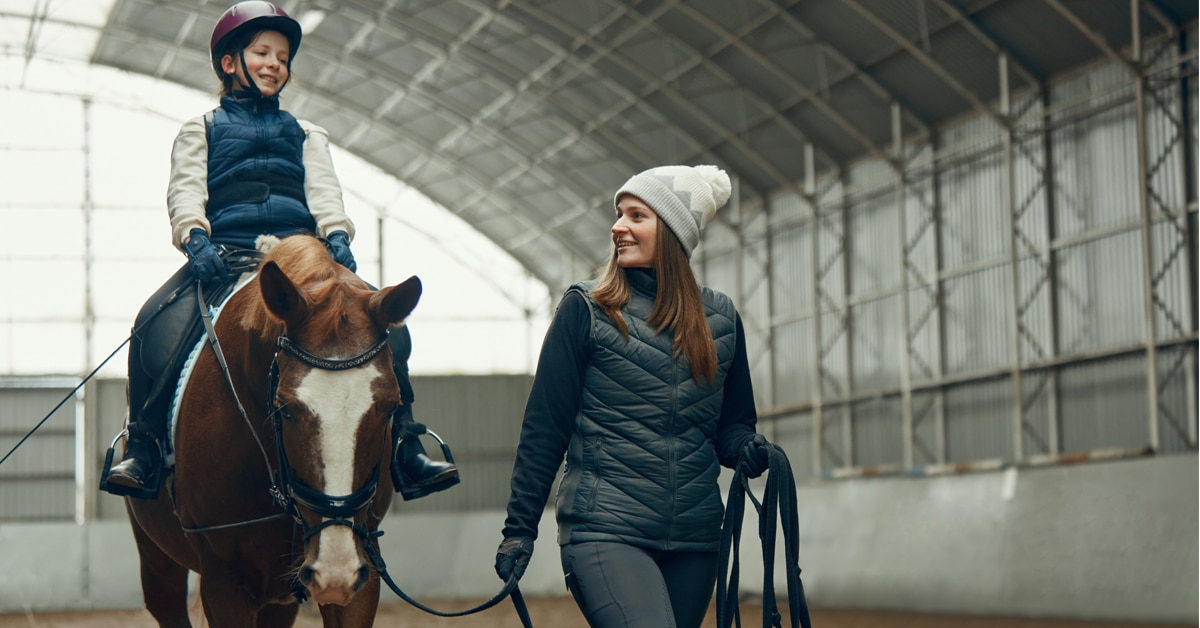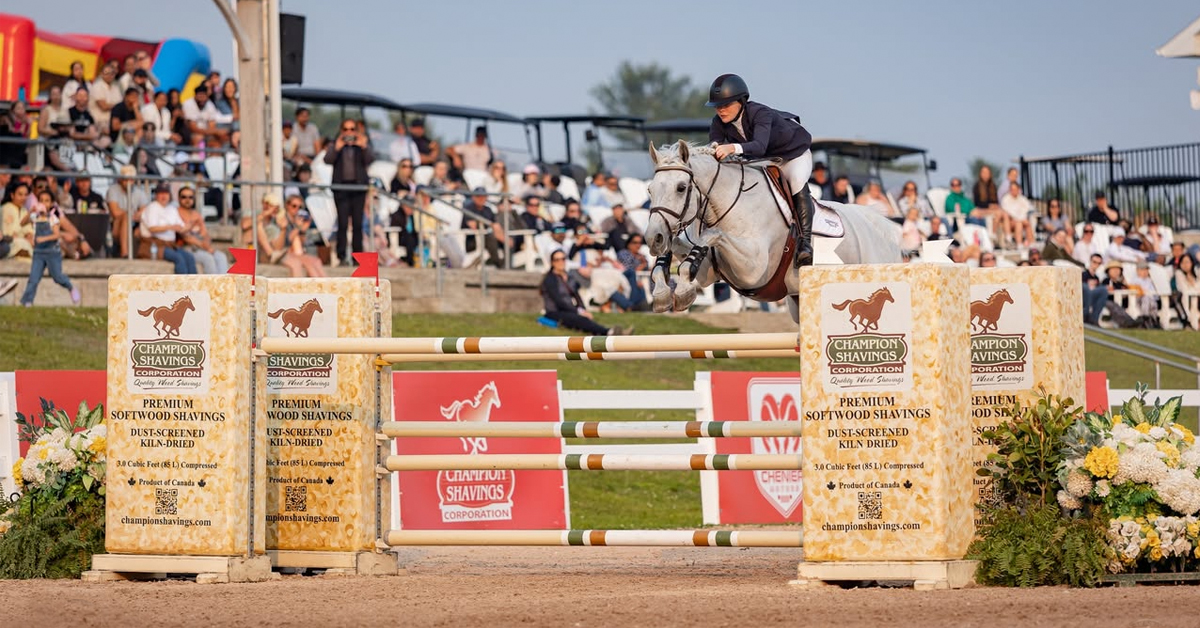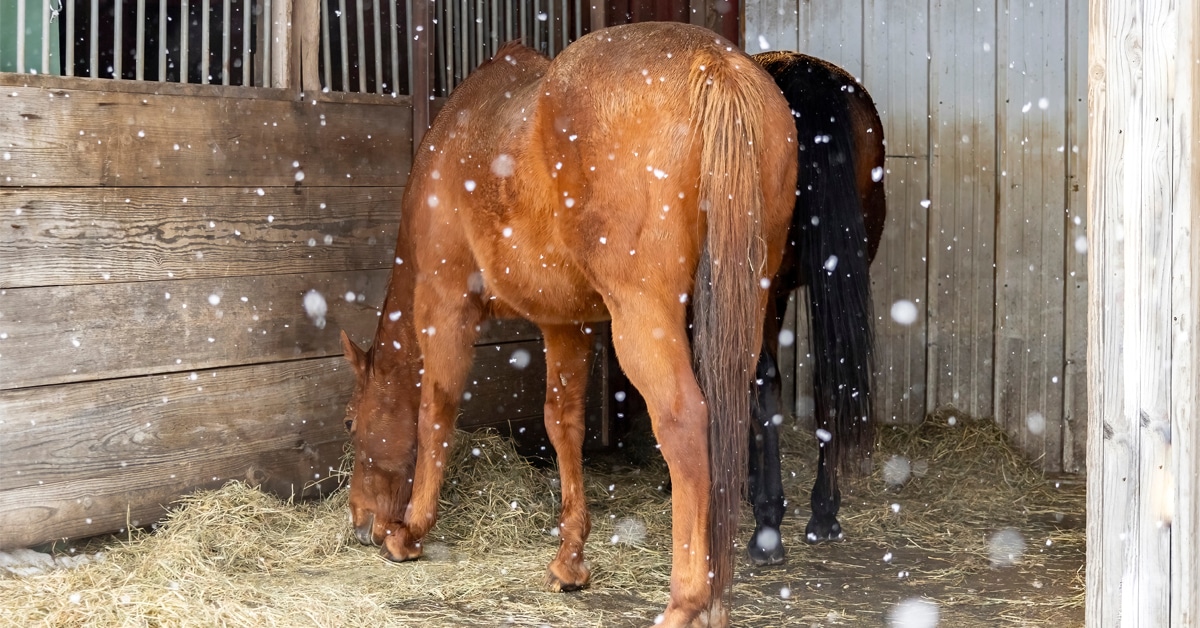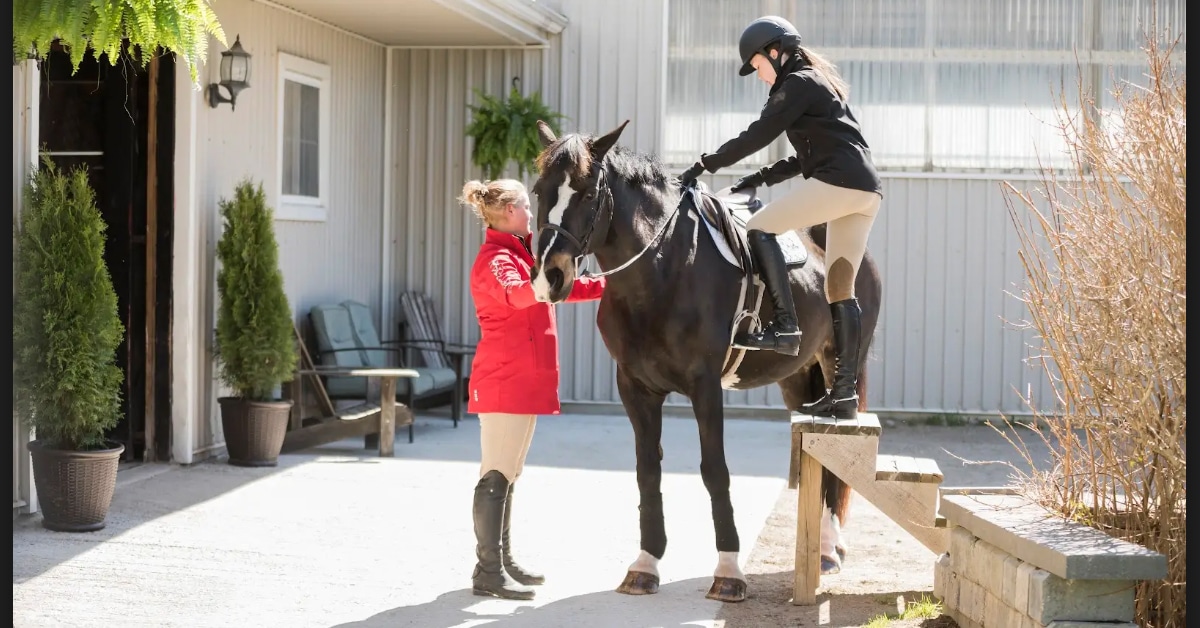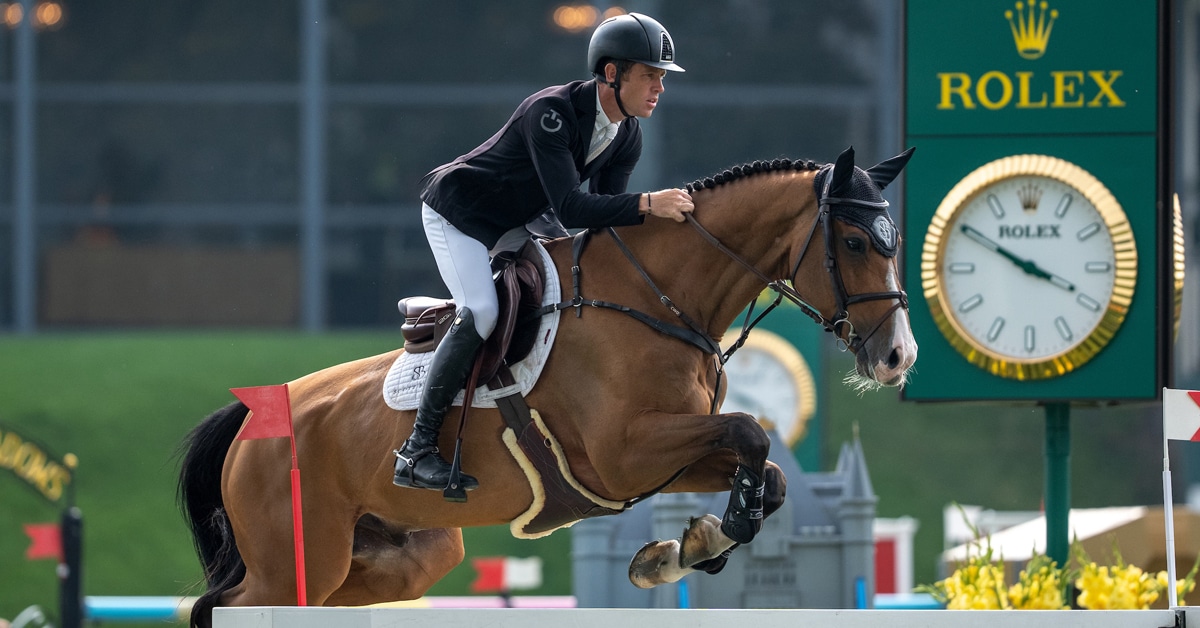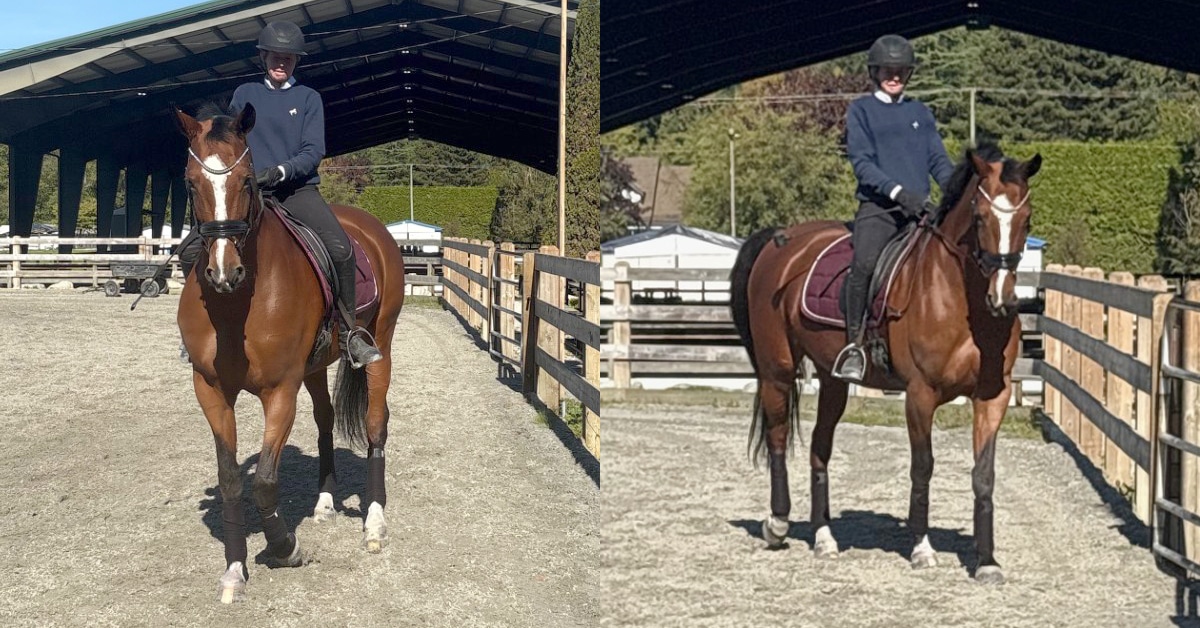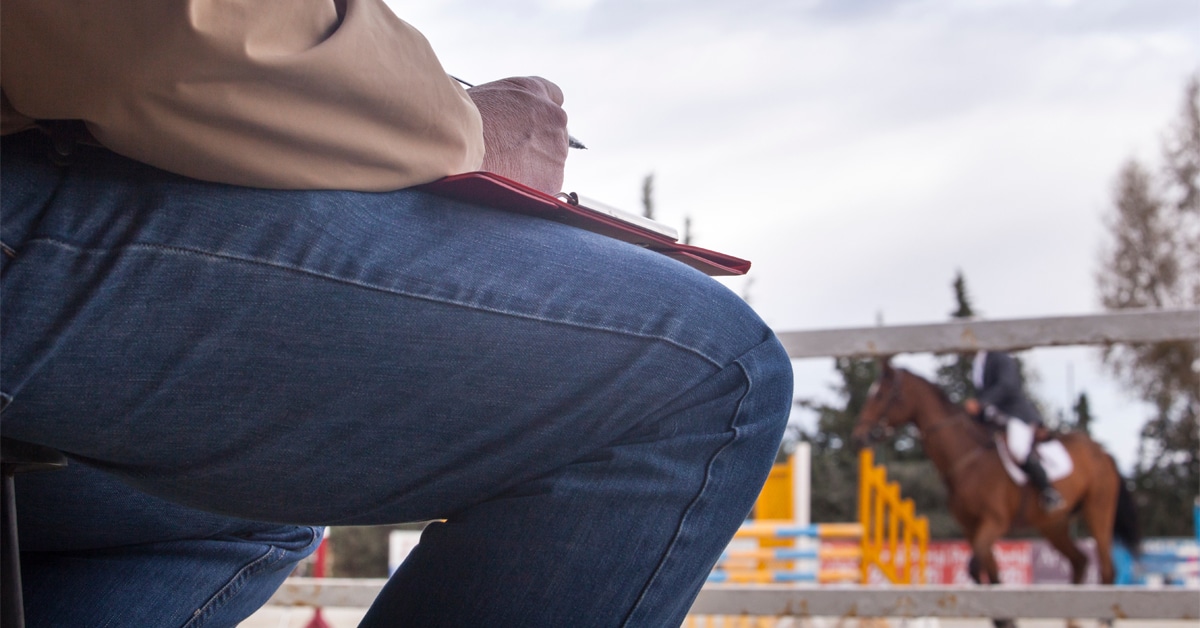Lauren Crooks-Brennan of Crooks Show Jumping has her eye on the future.
Since 2019, the Washington-based grand prix rider, together with her husband, James Brennan, has sponsored the Young Horse Series at Thunderbird Show Park. It’s a division that serves their own pipeline for developing show jumping prospects and the industry at large.
What inspired you to take over the sponsorship of the Young Horse Series?
As a professional, and now especially having gotten into breeding some of my old Grand Prix mares, I’ve always had the philosophy of bringing up a lot of my own horses and buying them young. Whether we keep them for sport or sell them, that’s been the mentality.
It’s important to have classes that showcase developing talent, where the horses can compete against their own age level for decent prize money, and make it affordable to do so. So, when the sponsorship opened up, it really was a division that meant something to me.
The entry fees are very low.
Low entry fees are part of it. Every year we try to increase the prize money too, so if you do well, you can come out pretty darn good in the show office, which is great.
You introduced changes to the Series in 2019, talk a bit about that and your goals.
Our goal was to make the Series more in line with the specs in the United States. So, for instance, when you leave the winter circuits in Florida or California jumping the young horse classes, we wanted to make sure that there were classes here where you could continue to develop your young horses, and not be jumping open divisions against 50 other horses that were on a totally different playing field.
To do that, we increased the heights for each age division and made it a bit more technical to set a certain level of expectation.
We also created a training division so if a horse is behind due to circumstance or injury or just mental capacity—some horses need more time to develop—that still allows you to take advantage of the low entry fees, but you don’t get to capitalize on the prize money. So, for instance, a 6-year-old can jump the 5-year-old height.
That’s always a big thing for us. Even if the horse isn’t ready for its age division, we still want to give it an opportunity to play catch up or get going.
We were looking up the bloodlines of this week’s Young Horse winners and there are some impressively-bred horses in those classes.
There’s so much access to good semen, people are really able to breed to top stallions. So it’s pretty cool to see.
And I think more and more people are learning that you need to have a quality mare.
Five to 10 years ago that was a little different. People were like, I have a mare and I’m just going to breed it. Well, that’s where it gets really expensive because breeding is such a crapshoot to begin with—you really want to make sure you start with a good mare.
Most of the dam lines you’re seeing in the classes are pretty well bred themselves, they’ve got the qualities that you’d want in a young horse.
Importing horses from Europe has largely been the norm in this industry. Do you see that changing?
Prices for horses are so competitive now that I feel like if you find that a six-year-old here versus Europe, it’s going to be pretty comparable in price. But obviously developing them in Europe is much cheaper.
I always keep an eye out for a nice horse. I don’t really care where I buy it. But from a breeder standpoint, it’s much more expensive to keep a horse in the States. Not only are the vet bills higher, you don’t get the quantity of shows for the really cheap price that you would in Europe. So young horses in Europe tend to have much more experience. Even if it’s just training shows, they see a ton of different places, different fences and all of that, whereas horses developed here would not see as many venues.
There’s a lot of factors to take into consideration. But, the beauty of having the Young Horse divisions here at tbird throughout the spring and summer and into the fall is that we get to compete in the grass, we get in the sand. And with the 5* events here in the spring, there’s a lot of atmosphere. So the young horses, especially the 6- and 7-year-olds, really get exposed to a lot, which is good.
What has been the most surprising or rewarding part about the Series for you?
I think the rewarding part is just how many people appreciate the fact that there’s a really competitive place for a young horse to try to place against its peers instead of in an open division.
They get the experience. Even if it ends up being just a nice amateur horse that’s maybe not super high level, it’s got the experience and miles it needs to then be successful in that niche.
I think one of the challenges is that everyone has an opinion on how they’d like the Series to be run. So as a sponsor, you have to have a really clear idea of what you’d like to get out of the division. But, at the same time, you take people’s opinions into account and see what fits the overall the direction you want to go.
For us, it’s been really making sure that the young horses are on a trajectory that’s very reasonable in comparison to other shows and venues around the North America.
You’re not just a sponsor, you’re also a competitor in the Series. What do you have coming up the pipeline?
We have some cool young ones coming through that we bred and are starting to hit the right age to start competing.
My brother, Sean, and I bought a four-year-old Catoki stallion named Itot du Rouet a few years ago that has been developing in Europe. We’re bringing him over next week actually for me to start to ride. He’ll be 7 next year and will show in that 7-year-old division. So that’ll be pretty fun for me because even though it’s not one I’ve developed the last two years, I’ve been involved a lot in the decision making.
And we’ll be able to showcase him as a stallion and breeding side of it, too.
We look forward to watching you two next year! Is there anything else you’d like people to know about the Crooks Show Jumping Young Horse Series?
We’re always looking to expand the division and finding more ways to increase prize money and to increase the importance of it. Making it a spectacular event that people can really gear towards is always the goal.
The Latest
